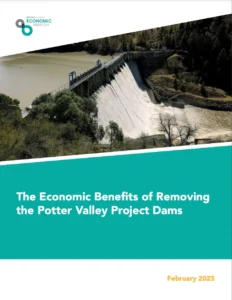CSPA Intervenes in Litigation on Drum-Spaulding and Yuba-Bear Hydroelectric Projects
 On May 7, 2024, CSPA and its allies intervened in the ongoing case of Nevada Irrigation District (NID) versus the Federal Energy Regulatory Commission (FERC). In the case before the United States Court of Appeals for the DC Circuit, NID is challenging the authority of the California State Water Resources Control Board (State Board) to issue a water quality certification for NID’s Yuba-Bear Hydroelectric Project.
On May 7, 2024, CSPA and its allies intervened in the ongoing case of Nevada Irrigation District (NID) versus the Federal Energy Regulatory Commission (FERC). In the case before the United States Court of Appeals for the DC Circuit, NID is challenging the authority of the California State Water Resources Control Board (State Board) to issue a water quality certification for NID’s Yuba-Bear Hydroelectric Project.
Joining CSPA in the intervention are Friends of the River, South Yuba River Citizens League, American Whitewater, and the Sierra Club Mother Lode Chapter.
The case has been consolidated with an earlier lawsuit filed by NID challenging the State Board’s authority to issue a certification for PG&E’s three Drum-Spaulding hydroelectric projects. CSPA and allies intervened in that case on January 18, 2024. Consolidation means that the Court will hear and rule on the two cases in one trial.
Clean Water Act Section 401 grants the State Board the authority to issue water quality certifications. The Clean Water Act is a federal law put in place to keep the nation’s waters “fishable, swimmable, and drinkable”. NID is attempting to circumvent regulatory measures that would improve outcomes for rivers, habitat, and fish related to the operation of the Yuba-Bear and Drum-Spaulding hydroelectric projects. NID is also, in essence, seeking to reduce regulation by the State Board.
CSPA intervened in these cases to protect the Clean Water Act, to uphold the State Board’s authority to apply license terms on these and other hydroelectric projects in California, and to defend the earlier court victory of CSPA and allies in overturning waiver of certification for the Yuba-Bear Project.
Why CSPA is Intervening
For many decades, CSPA has advocated for the state’s fisheries by participating in FERC’s relicensing processes and the State Board’s associated water quality certification processes. Through these processes, CSPA and its allies have won significant protections for the North Fork of the Feather River, Caples Creek, Silver Fork of the American River, the Mokelumne River and others. These protections will be in place for many decades to come.
NID refuses to accept the State Board’s authority to impose regulations on how NID and PG&E operate their hydroelectric projects. This adversarial position toward the Clean Water Act is not an isolated case. Turlock Irrigation District (TID) and Modesto Irrigation Districts (MID), Merced Irrigation District (Merced ID), and Yuba County Water Agency have all engaged in similar litigation tactics to avoid state regulation of their hydroelectric projects.
State Board Takes Action
On May 7, 2024, the State Board adopted an order to set aside water quality certifications it had issued for hydroelectric projects operated by NID, TID and MID, and Merced ID. The State Board requested that NID request certification again and comply with CEQA by producing documentation on the project’s environmental impacts.
The State Board made this decision in response to the United States Environmental Protection Agency’s 2023 Rule, which prevents certifying authorities from issuing certification in the absence of a pending request for certification. CSPA supports the State Board’s decision because it will expedite the certification process and will increase the legal defensibility of the State Board’s water quality certifications.
Conclusion
The lack of terms placed on the original licenses of hydropower projects has left many of California’s rivers and fisheries in dire condition. Hydropower projects must be subject to license terms that minimize the impact they have on the water quality of California’s rivers, including flows.
The Clean Water Act provides the legal framework for the State Board to protect the state’s waterways from degradation. By participating in NID’s cases before the DC Circuit, CSPA is continuing its campaign to protect the Clean Water Act and its wider campaign to protect rivers from the effects of hydropower dams.
——–
Read more here for a description of earlier cases and additional background.


